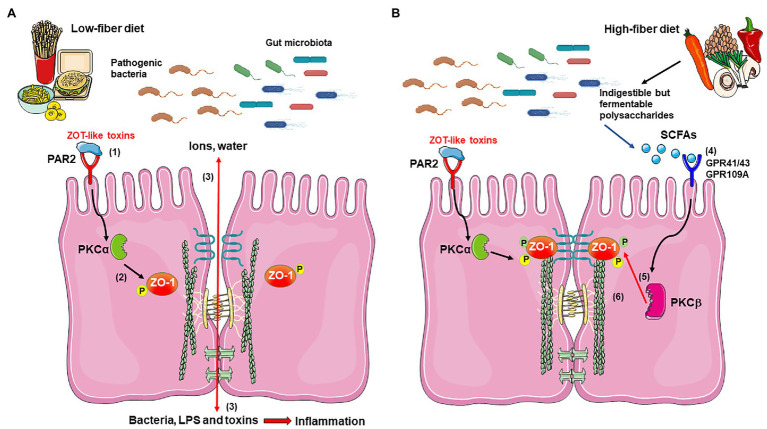Figure 1.
Proposed mechanism for short-chain fatty acids (SFCAs) effects in improvement of the epithelial barrier damaged by bacterial Zot-like toxins. (A) During infection with pathogenic bacteria and in the presence of a low-fiber diet, Zot-like toxins interact with PAR-2 (1), which signals and activates PKCα (2). PKCα catalyzes the phosphorylation of ZO-1 at specific residues, which disconnects it from occludin, claudin, and F-actin (2), with the subsequent loss of tight junction (TJ) integrity. The disassembling of TJ allows the massive filtration of ions and water into the lumen of the intestine, as well as the entry of bacteria and bacterial components, such as LPS and other toxins, which promotes a severe inflammatory response (3). (B) The possible activation of GPR41, GPR43, and/or GPR109A by acetate, propionate, and butyrate produced by gut microbiota from dietary fiber (4) activates PKCβ (5), which phosphorylates ZO-1 at different residues than PKCα, allowing its reconnection with occludin, claudin, and F-actin (6), thus recovering the structure and function of the TJ and counteracting the Zot effect. The figure was produced using Servier Medical Art (https://smart.servier.com/).

